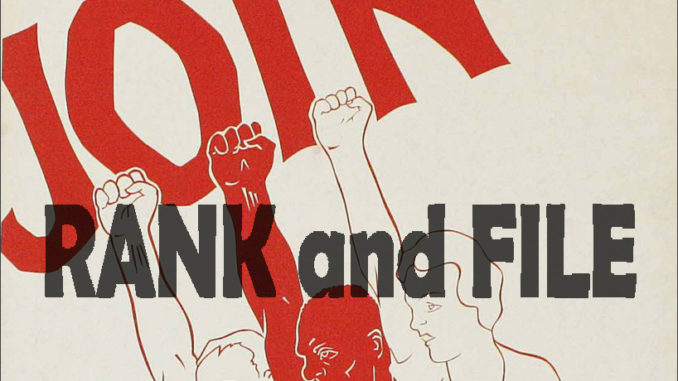
What is your occupation?
I work at an Amazon fulfillment center in the tri-state area.
How long have you worked at Amazon?
Almost a year now.
What’s it like working at the warehouse?
I grew up in a pretty nice suburban neighborhood, and when I started at Amazon I was totally unfamiliar with industrial workplaces. When you walk out onto the floor of my warehouse, you’re surrounded by a maze of conveyor belts moving millions of dollars of product around at a super-fast pace. The sounds and scale are something I’ll never forget. I’ve worked in restaurants, food delivery, and at a summer camp. None of that really prepared me for the fulfillment center.
Beyond the warehouse itself, there’s a real energy that comes from the people who make the place run. My shift is smaller than others, but begins each day with at least 400 or 500 workers streaming through one entrance, clocking in, and then heading to our pre-shift pep rallies (which are very stupid and demeaning). We’re a very diverse group. Half are women, which defies a lot of false stereotypes about warehouse work. The majority of my coworkers are black. But nobody sticks out, really–we’re a very multiracial group. Along lines of nationality, age, and religion, we’re also incredibly varied. It’s a lot like working class New York or North Jersey as a whole, in many ways.
The work itself is hard and repetitive. At my facility we do a few main things: receive inventory from trucks, stow the goods on a vast sea of shelves, pick items from the shelves for customer orders, sort and pack the items in boxes, and put boxes on trucks. The trucks then go directly to carriers like UPS or FedEx, or to other Amazon facilities for further processing. These main tasks mostly involve moving product by hand. All this work requires little thought, and the training is pretty minimal. The shifts are long (10 or 12 hours) and there is an enforced rate (i.e., the number of units you’re expected to process each hour).

How are you holding up after the holiday season?
During peak season, most of us saw a month or more of mandatory 60-hour weeks. It’s exhausting. Many of us expected easier work after the holidays, but it didn’t really let up. Even though customer demand is lower, the workforce is smaller because many workers quit or are fired this time of year. So we’re all working faster than we were during the holidays, despite customer orders being down and the work week being shorter. But people don’t just sit back and accept this abuse. You might not hear about it in the news, but I’ve seen coworkers simply stop working, or purposely slow down. When you push people, they push back, even if they’re not organized.
Have you heard about the organizing campaign at the Staten Island Fulfillment Center announced by RWDSU? Have your coworkers?
We need to unionize, without a doubt. I’ve talked to a handful of my coworkers and they reacted positively to the news. These warehouses are really big and it will take a lot of effort to organize even one. And even though the anger is there, people I know aren’t used to seeing unions fighting and winning these days. So even though I’m optimistic, I think it’s going to be a long but really crucial fight.
What changes would you envision in a unionized Amazon fulfillment center?
So much needs to change immediately. Most people I know were really angry about mandatory overtime. Pushing back against the company’s use of rates for productivity would also be up there. On my shift, there’s a lot of racism and favoritism when it comes to promotions and placement in more prestigious positions. One desirable role on my shift is almost entirely white. And even with the recent company minimum wage increase to $15 (with regional wages up to several dollars higher), you can’t survive here on less than $20 an hour.
More long term, we need to transform the work process itself. The majority of work in the warehouse isn’t fit for people. People should be able to exercise creativity, work socially in teams, and use our minds. Because the company has to look out for its bottom line, the vast majority of jobs are designed to be the exact opposite.
What do you think about the company’s plans for HQ2 in Queens? How about your coworkers?
I used to live in the city, so I think it’s important to fight gentrification. Some of my coworkers feel the same way, but I worry that to a lot of people the fight against HQ2 feels far away. Most of the important Amazon logistics facilities are out in the suburbs. My hunch is that this is a problem because warehouse workers have a lot of power over the company, but aren’t too affected by HQ2. If you’re out in Jersey or Staten Island, you probably aren’t going to automatically blame your rising rent on HQ2. I’m not sure what the solution is, but we definitely have to organize and think creatively.
Some socialists argue that DSA members should get jobs at Amazon to organize. Do you agree?
Absolutely. My facility alone processes orders that are worth hundreds of millions, maybe billions of dollars each year. Socialists want to change the world and Amazon workers have the power to make change happen. It would take a humble person who is willing to learn from and listen to their coworkers, but it’s a fight we all have to win.
